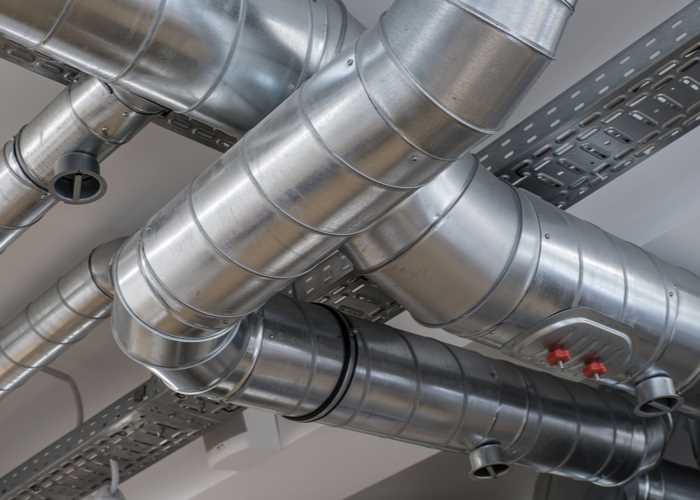Mechanical ventilation with heat recovery (MVHR) is an increasingly popular technology, and for good reason. It provides improved indoor air quality and lowers energy consumption related to heating - both of which are a priority in the world we live in today.
In this article, we cover the main considerations for MVHR installation, but first let's look at the basics of how MVHR works.
You can find a more in depth explanation of MVHR and its benefits in our introduction to heat recovery ventilation, but to give context for what follows, here’s a brief overview of how these systems work.
MVHR is built around a central heat exchange unit, with several sets of ducts connected to it. The first set of ducts draw indoor air into the system and direct it to the heat exchange, where heat is recovered before the stale air is expelled outdoors.
Meanwhile, the second set of ducts pull outdoor air in, filter it, and send it to the heat exchange to pick up the recovered heat energy. This warmed air is then distributed around the property.
In short, a well designed MVHR system brings a constant supply of clean air while making use of otherwise wasted heat energy to increase its temperature.
So now we know what these systems do, let’s look at the design and installation process.
MVHR systems are only effective when installed in relatively airtight buildings. If the property in question is subject to unintentional air leakage, MVHR performance is significantly compromised, since heat energy will escape the building before it can be recovered.
The ideal approach is to build MVHR into a new property (which must comply with Building Regulation standards on airtightness), but it is perfectly possible to fit these systems into existing building.
If you are looking to retrofit, the first thing to do is get expert advice on how effective a solution MVHR will prove.

The right level of filtration is important to ensure a fresh, filtered air supply and to keep the system running at optimum performance levels. Overtime, filters become clogged with particulate matter, lowering filtration efficiency and efficiency of the system overall.
The quality of the outdoor air around your property will dictate the level of filtration required - the higher the pollution levels, the greater the need. You can use DEFRA’s air pollution forecast map to research air quality in your area.
You should also consider how often filters will need changing, and factor this into the cost of regular MVHR maintenance.
Correct sizing is essential. It’s a common misconception that a smaller unit of higher efficiency will perform as effectively as a larger unit of lower efficiency, but this is not true. The unit must be sized to meet the exact airflow requirements of the building.
Too small and it will struggle to meet demand, increasing energy consumption and, more often than not, causing intrusive noise issues. Too large and you’re using energy needlessly. Ideally, you want your unit to be running at around 50-60% of its maximum capacity.
The way MVHR works means you’ll have two airflow vents - one that draws air in from outside, and one that expels air from inside out. Correct placement of these vents is key.
For the intake vent, this should be placed well away from any pollution source (e.g. chimneys) and sheltered from wind as much as possible - particularly if other pollution sources like busy roads are located nearby.
You also don’t want your exhaust vent situated below your intake vent, as the expelled air will typically be warmer than the outdoor air, and will rise up to the vent above it.

The quality of your ductwork is just as important as the quality of your ventilation unit. This ducting should be rigid, correctly sized, well sealed at connecting joints and ideally laid within the insulation layer of the building (or insulated itself where this is not possible).
You may look at it as a cost saving exercise, but sub-standard ductwork will result in an underperforming system and higher maintenance costs in the long term. It may even cause damage to the ventilation unit and/or the fabric of your building.
Compliance for the design and installation of MVHR falls under Building Regulations Part F, with Approved Document F laying down guidelines for both domestic and non-domestic buildings.
It is critical that your system is designed to meet all the necessary requirements, and is certified as such on installation.
It takes knowledge and expertise to design and install a high performing, future proof MVHR system - so to avoid the need for costly and disruptive alterations further down the line, you should be seeking expert advice in the early planning stages.
At Loughborough Air Conditioning, we have years of experience in the design, installation and commissioning of effective ventilation systems, and are able to self certify work under Building Regulations Part F as part of the BESCA Competent Person Scheme.
